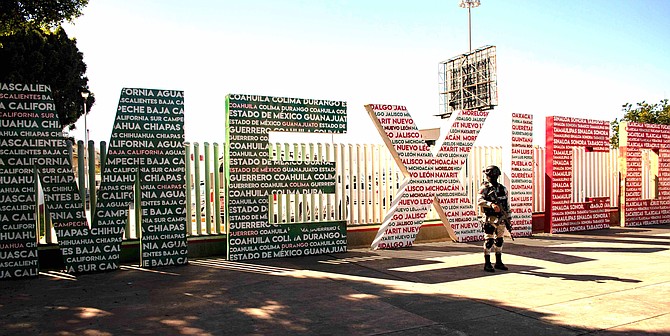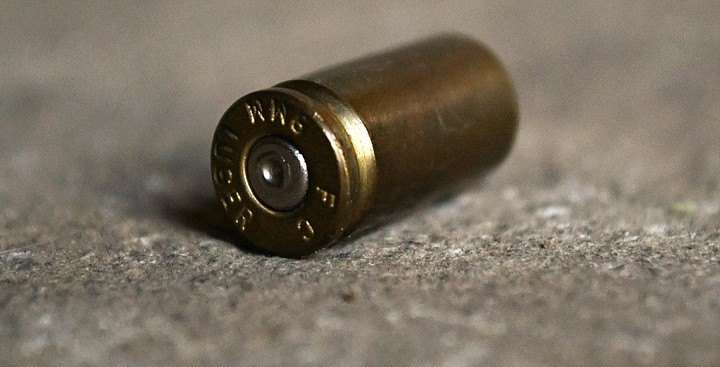 Facebook
Facebook
 X
X
 Instagram
Instagram
 TikTok
TikTok
 Youtube
Youtube

Tijuana's Mayor Monserrat Caballero and her administration haven't been able to reduce cartel violence much. Not long ago cartels turned the city into one of the most dangerous cities in Mexico.
According to the Baja California prosecutor's office, in 2018 the city total reached 2,600 murders. In 2019 the numbers in Tijuana fell to 2,185 homicides. 2,209 homicides were registered in 2020 and for 2020, the number reached 1932.

According to Zeta, a local paper that investigates Tijuana cartels, this violence stays in the hands of two main cartels. The oldest and the one holding control of drug smuggling, extortion, and human trafficking is the Sinaloa Cartel, which has remained in TJ despite the transition from El Chapo to his sons.
The other one is Cartel Jalisco Nueva Generacion, which has grown rapidly since 2018 and has expanded to 13 states in Mexico. It's considered now the biggest drug cartel in Mexico, and through alliances with the local cartels made its way into Tijuana. Since Tijuana's local cartel leader was detained and lost power against the Sinaloa cartel, the Central Jalisco group started to get influence and control in this border city.
The most affected areas are the neighborhoods in the outskirts. Shootings between members of these two cartels are likely to happen in neighborhoods such as Nueva Aurora on the southwest side of the city, about 15 miles away from Tijuana's downtown.
On May 20, neighbors of this area witnessed two shootings. Both happened near the migrant shelter Agape, where Ana Laura from Michoacan was wounded by a stray bullet. At least nine times the shelter has been in crossfire, according to Ulises Renteria, another migrant from Michoacan there who has been staying there for one year with his family.
"When we hear gunshots everybody has to hide in the church, but that time one of these groups was right behind our shelter, in one of the rooms under construction. Some of the migrants hid in their tents. Then was when a bullet reached Ana Laura.... When I saw her, she couldn't move at all, but she was conscious when paramedics arrived."
The bullet hit Ana Laura between her chest and neck; she lost some movement and now needs a wheelchair. Days after leaving the hospital, on June 10 her refugee application was accepted.
Ulises explained that the main reason people from the state of Michoacan come to the border is because of cartel violence. His brother-in-law lost his leg after being shot by local drug cartels when he refused to work for them.
"I know anyone in the city is vulnerable to this kind of violence but we ask the Mexican government to enhance the security and to the U.S. government to help us for humanitarian reasons; our situation is urgent."


Tijuana's Mayor Monserrat Caballero and her administration haven't been able to reduce cartel violence much. Not long ago cartels turned the city into one of the most dangerous cities in Mexico.
According to the Baja California prosecutor's office, in 2018 the city total reached 2,600 murders. In 2019 the numbers in Tijuana fell to 2,185 homicides. 2,209 homicides were registered in 2020 and for 2020, the number reached 1932.

According to Zeta, a local paper that investigates Tijuana cartels, this violence stays in the hands of two main cartels. The oldest and the one holding control of drug smuggling, extortion, and human trafficking is the Sinaloa Cartel, which has remained in TJ despite the transition from El Chapo to his sons.
The other one is Cartel Jalisco Nueva Generacion, which has grown rapidly since 2018 and has expanded to 13 states in Mexico. It's considered now the biggest drug cartel in Mexico, and through alliances with the local cartels made its way into Tijuana. Since Tijuana's local cartel leader was detained and lost power against the Sinaloa cartel, the Central Jalisco group started to get influence and control in this border city.
The most affected areas are the neighborhoods in the outskirts. Shootings between members of these two cartels are likely to happen in neighborhoods such as Nueva Aurora on the southwest side of the city, about 15 miles away from Tijuana's downtown.
On May 20, neighbors of this area witnessed two shootings. Both happened near the migrant shelter Agape, where Ana Laura from Michoacan was wounded by a stray bullet. At least nine times the shelter has been in crossfire, according to Ulises Renteria, another migrant from Michoacan there who has been staying there for one year with his family.
"When we hear gunshots everybody has to hide in the church, but that time one of these groups was right behind our shelter, in one of the rooms under construction. Some of the migrants hid in their tents. Then was when a bullet reached Ana Laura.... When I saw her, she couldn't move at all, but she was conscious when paramedics arrived."
The bullet hit Ana Laura between her chest and neck; she lost some movement and now needs a wheelchair. Days after leaving the hospital, on June 10 her refugee application was accepted.
Ulises explained that the main reason people from the state of Michoacan come to the border is because of cartel violence. His brother-in-law lost his leg after being shot by local drug cartels when he refused to work for them.
"I know anyone in the city is vulnerable to this kind of violence but we ask the Mexican government to enhance the security and to the U.S. government to help us for humanitarian reasons; our situation is urgent."
Comments